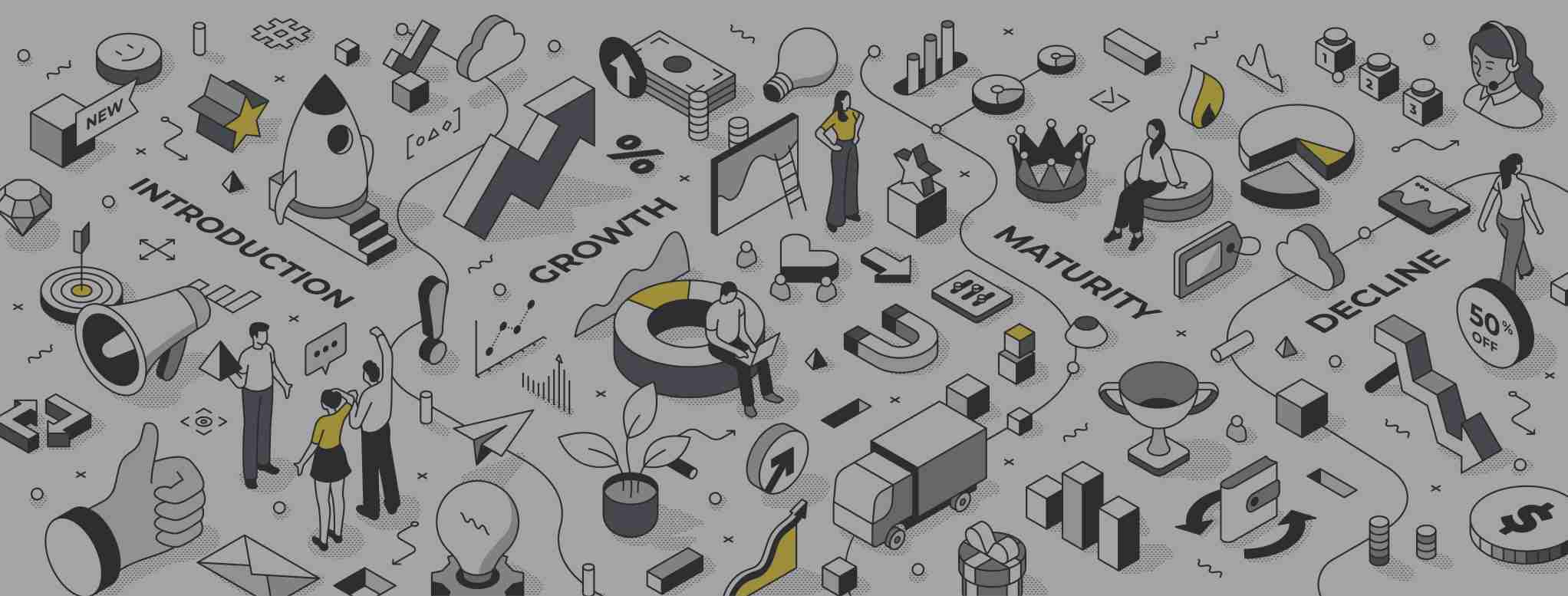In the fast-paced and highly competitive sectors of SaaS and Fintech, deploying an effective go-to-market (GTM) strategy is crucial. The ARISE™ GTM framework, which stands for Assess, Research, Ideate, Strategise, and Execute, serves as a comprehensive roadmap for companies aiming to launch and scale their solutions successfully.
Central to this framework is the Research stage, a phase that significantly influences a product’s trajectory of market entry and growth. This article explores the pivotal role of research within the ARISE™ framework and its specific benefits to SaaS and fintech companies.
Understanding the ARISE™ Research Stage
The Research stage in the ARISE™ framework is where companies gather critical insights that inform all subsequent strategic decisions. This stage involves a thorough analysis of the competitive landscape, customer preferences, market trends, and potential barriers to entry. For SaaS and fintech firms, this stage is about collecting data and deeply understanding the ecosystem within which they operate.
Components of the Research Stage
- Competitive Analysis: This includes tools like SWOT analysis and competitive intelligence audits, which help identify direct and indirect competitors and assess their strengths and weaknesses.
- Market Trends and Dynamics: Understanding evolving trends, regulatory changes, and technological advancements that could impact the market.
- Customer Insights involve gathering data through surveys, interviews, and feedback mechanisms to understand customer needs, pain points, and usage patterns.
- Porter’s Five Forces Analysis: Analysing the industry structure to determine competitive intensity and profitability
The Benefits of Research in GTM Strategy for SaaS and Fintech
Enhanced Market Understanding
For SaaS and fintech companies, markets can change rapidly. The Research stage provides a deep dive into current and emerging market conditions, enabling companies to adapt their strategies quickly. This dynamic understanding helps anticipate market needs and adjust offerings accordingly.
Competitive Edge
Through competitive analysis, companies can identify gaps in competitors’ offerings and explore areas for differentiation. This can lead to the development of unique value propositions that set a product apart in crowded markets.
Risk Mitigation
Understanding potential threats and barriers during the Research stage allows companies to devise strategies to mitigate these risks. For fintech companies, this could mean navigating regulatory changes; for SaaS companies, it might involve addressing data security concerns.
Customer-Centric Product Development
Insights gathered from customer feedback during the research stage guide product development to meet market demands better. This alignment with customer needs is crucial for achieving high adoption rates and customer satisfaction.
Strategic Alignment and Decision Making
The insights gained from the Research stage ensure that all strategic decisions, from product development to marketing and sales strategies, are informed and aligned with the market realities. This coherence across strategies enhances the effectiveness of the GTM plan.
The Research stage of the ARISE™ GTM framework is foundational for SaaS and fintech companies preparing to launch or scale their products. By providing a deep understanding of the competitive landscape, customer needs, and market dynamics, this stage empowers companies to make informed decisions that enhance their market positioning and operational effectiveness.
Investing in thorough research is beneficial and essential for crafting a GTM strategy that resonates with the market and drives sustainable growth. So, let’s dive into it.

The Strategic Edge: Leveraging SWOT Analysis for SaaS and Fintech Go-to-Market Strategies
For SaaS and financial technology, a well-crafted go-to-market (GTM) strategy is not just a pathway to launch—it's a blueprint for sustainable growth and competitive differentiation. The SWOT analysis, a tool that dissects a company's internal Strengths and Weaknesses alongside external Opportunities and Threats, is central to developing such a strategy.
This analytical process is particularly beneficial for SaaS and fintech firms as they navigate a landscape of intense competition, technological innovation, and regulatory complexities.
The SWOT Framework: A Strategic Compass
Strengths: Uncovering Competitive Advantages
SaaS and fintech companies often have strengths in technological innovation, agility, and customer-centric solutions. A SWOT analysis helps identify these unique selling propositions (USPs) that can be leveraged in a GTM strategy. For instance, a fintech startup might possess a cutting-edge payment processing platform that outperforms competitors in speed and security—a strength that should be highlighted in market positioning.
Weaknesses: Identifying Areas for Improvement
Weaknesses in SaaS and fintech could include limited brand recognition, funding constraints, or gaps in the product offering. SWOT brings these weaknesses to the forefront, allowing companies to address them proactively. For example, a SaaS company might recognise the need for enhanced customer support and can plan to allocate resources accordingly in its GTM strategy.
Opportunities: Seizing Market Potential
Opportunities in the SWOT analysis include regulatory changes favouring digital finance, emerging markets, or technological advancements. For fintech companies, this could mean capitalising on a new regulatory environment that encourages digital banking, thus expanding their customer base.
Threats: Anticipating Market Challenges
Threats could range from cybersecurity risks to new entrants disrupting the market. A SWOT analysis enables SaaS and fintech firms to anticipate these challenges and integrate risk mitigation into their GTM strategies. For instance, a fintech firm might foresee regulatory changes as a threat and prepare by enhancing compliance measures.
SWOT Analysis in Action: Informing GTM Strategies
Competitive Analysis and Market Positioning
A thorough SWOT analysis includes a competitive analysis, which is crucial for understanding where a SaaS or fintech company stands relative to its competitors. This insight informs how a company positions itself in the market—whether it's as a cost leader, an innovator, or a niche service provider.
Product Development and Innovation
The SWOT framework can guide product development by highlighting areas where a company's offerings are strong and where there is room for innovation. For SaaS companies, this might mean developing new features in response to identified opportunities or shoring up weaknesses in their current offerings.
Marketing and Sales Strategies
The insights from a SWOT analysis can shape marketing and sales strategies by identifying the most compelling selling points and potential customer concerns. For fintech firms, this could involve tailoring marketing messages to highlight the security and convenience of their platforms, addressing common customer pain points.
Risk Management and Contingency Planning
Companies can develop contingency plans by identifying potential threats as part of their GTM strategy. This is particularly important for fintech companies, which operate in a highly regulated environment and must be prepared for shifts in regulatory landscapes.
The SWOT Path to Strategic Clarity
In conclusion, SWOT analysis is indispensable for SaaS and fintech companies crafting their GTM strategies. It provides a structured approach to dissecting a company's strategic position and informs decision-making across product development, market positioning, marketing, and risk management.
By leveraging the insights gained from SWOT, SaaS and fintech firms can confidently navigate the complexities of their industries, ensuring their GTM strategies are reactive, proactive, and aligned with market dynamics.

Harnessing Competitive Intelligence Audits: A SaaS and Fintech GTM Catalyst
A robust go-to-market (GTM) strategy is not just a launchpad—it's the fuel that propels a product to market leadership. At the heart of this strategic thrust lies the competitive intelligence (CI) audit, a meticulous process that arms businesses with the necessary insights to navigate the market's turbulent waters. Let's explore the multifaceted benefits of CI audits and their transformative impact on the GTM strategies of SaaS and fintech companies.
The Competitive Intelligence Audit: A Strategic Overview
A competitive intelligence audit is a comprehensive review beyond mere competitor monitoring. It encompasses a deep dive into competitors' strategies, market positions, and customer perceptions, providing a 360-degree view of the competitive landscape3. For SaaS and fintech companies, where innovation cycles are rapid, and customer expectations are ever-evolving, CI audits are not just beneficial—they are indispensable.
Unveiling Competitors' Playbooks
CI audits reveal competitors' strategic moves, from their product features to their marketing tactics and sales approaches. This knowledge enables SaaS and fintech firms to anticipate market shifts and strategically position their offerings. By understanding what competitors are doing right—or wrong—companies can refine their strategies to gain a competitive edge.
Identifying Market Opportunities and Threats
Through CI audits, SaaS and fintech companies can identify underserved market niches or emerging trends that competitors have overlooked. Conversely, audits can pinpoint potential threats, such as new entrants or disruptive technologies, allowing companies to adjust their GTM strategies proactively.
Enhancing Product Development
Insights from CI audits can inform product development, guiding SaaS and fintech firms to prioritise features and innovations that address market gaps or capitalise on competitors' weaknesses. This targeted approach to product enhancement ensures that new offerings resonate with market needs and stand out from the competition.
Refining Marketing and Sales Strategies
CI audits provide valuable data that can shape marketing messages and sales pitches38. By understanding competitors' value propositions and customer feedback, SaaS and fintech companies can craft compelling narratives highlighting their unique strengths and addressing potential customer objections.
The GTM Advantage: CI Audits in Action
Strategic Decision-Making
Armed with the insights from CI audits, SaaS and fintech companies can make data-driven decisions that align with market realities. Whether it's choosing the right pricing model or selecting the most effective marketing channels, CI audits provide the evidence-based guidance needed for strategic decision-making.
Competitive Differentiation
In markets saturated with similar offerings, differentiation is key. CI audits help SaaS and fintech firms pinpoint and communicate their unique selling points, setting them apart from the competition and resonating with target audiences.
Customer-Centric Focus
By analysing competitors' customer feedback and win/loss interviews, companies can better understand customer needs and preferences. This customer-centric focus ensures that GTM strategies are tailored to meet and exceed customer expectations, fostering loyalty and driving growth.
Risk Mitigation
CI audits enable SaaS and fintech companies to identify and assess risks associated with competitive dynamics. By anticipating potential challenges, firms can develop contingency plans, ensuring their GTM strategies are robust and resilient.
The CI Audit as a GTM Linchpin
In conclusion, competitive intelligence audits are critical to effective GTM strategies for SaaS and fintech companies. By providing a comprehensive understanding of the competitive landscape, CI audits empower businesses to make informed decisions, differentiate themselves, focus on customer needs, and mitigate risks.
As the SaaS and fintech sectors continue to grow and evolve, the role of CI audits in shaping successful GTM strategies will only become more pronounced. Those harnessing the power of competitive intelligence will confidently navigate the market and achieve a sustainable competitive advantage.

Enhancing SaaS and Fintech Strategies: The Power of Win-Loss Interviews and Analysis
Understanding the nuances of market dynamics is crucial. Win-loss interviews and analysis provide invaluable insights that can significantly refine go-to-market (GTM) strategies. Let’s explore how win-loss analysis in ARISE™ GTM benefits SaaS and fintech companies, focusing on customer feedback, product development, persona development, sales process improvement, and customer service enhancements.
Customer Feedback: The Cornerstone of Market Alignment
Win-loss interviews are a rich source of direct customer feedback, revealing why prospects choose or reject a service. This feedback is critical for SaaS and fintech companies to align their offerings with market expectations and customer needs. Companies can tailor their marketing messages, adjust product features, and enhance overall customer engagement strategies by understanding the specific reasons behind customer decisions.
Product Development: Driven by Real User Insights
The insights gained from win-loss analysis are particularly beneficial for product development. These interviews can highlight which features customers value most and which are lacking, providing a clear direction for future development efforts. For SaaS and fintech firms, where product differentiation is key to success, such feedback helps ensure that new features and services meet the precise needs of the target market, thereby improving product-market fit.
Persona Development: Sharpening Targeting Accuracy
Persona development is another critical area where win-loss analysis offers substantial benefits. Companies can create detailed buyer personas by analysing patterns in why certain customers win or lose. These personas help craft highly targeted marketing strategies and sales pitches, which are essential for effective segmentation and personalised marketing.
Sales Process Improvement: Enhancing Conversion Strategies
The win-loss analysis provides direct insights into the effectiveness of sales strategies and processes. Understanding why deals are won or lost helps sales teams refine their approach, focusing on what resonates best with prospects.
This might include adjusting sales tactics, improving engagement techniques, or even retraining sales personnel to meet customer expectations better. For SaaS and fintech companies, where sales cycles can be complex and highly competitive, such improvements are crucial for boosting conversion rates and overall sales efficiency.
Customer Service Improvements: Building Loyalty and Retention
Finally, win-loss interviews can significantly enhance customer service by identifying service elements impacting customer satisfaction and loyalty. Insights from these interviews can lead to improved support services, more effective customer onboarding processes, and enhanced customer engagement strategies. For fintech and SaaS companies, where customer retention directly impacts recurring revenue, such improvements are invaluable.
Win-loss interviews and analysis are indispensable tools for SaaS and fintech companies aiming to refine their GTM strategies and are an essential part of the ARISE™GTM Framework. By providing deep insights into customer preferences, competitive dynamics, and market trends, these analyses help companies enhance product offerings, improve sales processes, develop accurate personas, and deliver superior customer service.
As the sectors continue to evolve, the companies that effectively utilise win-loss insights will likely lead to innovation, customer satisfaction, and market share.
This article explains the research part of ARISE™ and what goes into getting our clients ready to pivot their GTM. Some things have been held back for obvious reasons not to make our service copyable. Let's discuss if you and your team want a GTM pivot.




